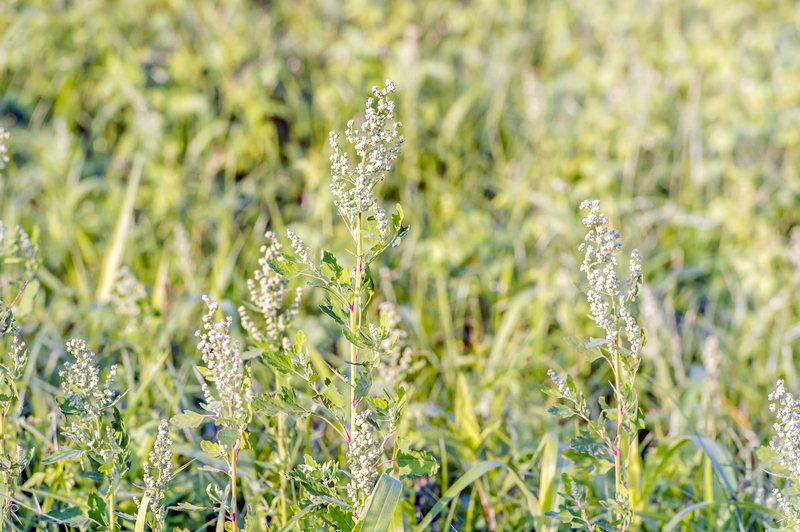Vertical Gardening: Breathing Life into City Walls
Posted on 20/06/2025
Vertical Gardening: Breathing Life into City Walls
Vertical gardening is transforming city walls into lush, green landscapes--bringing nature back into our rapidly urbanizing world. With increasing population density and dwindling green spaces, cities worldwide are turning to innovative solutions like vertical gardens to create healthier, more vibrant urban environments. In this article, we'll explore the benefits, types, and best practices of vertical gardening, as well as provide inspiration and practical tips to help you turn any barren wall into a living masterpiece.
The Rise of Vertical Gardening in Urban Spaces
Modern cities are facing a crisis: limited space for nature. As concrete buildings grow taller and wider, traditional gardens are becoming a rare luxury. Vertical gardening--sometimes called green walls or living walls--offers a creative solution by allowing plants to grow vertically on otherwise unused wall surfaces. This innovative practice is not only breathing life into city walls, but also delivering impressive environmental and psychological benefits.
Why Are Green Walls Gaining Popularity?
- Space Efficiency: Vertical gardens utilize spaces that would otherwise remain empty, maximizing greenery without expanding city footprints.
- Air Quality Improvement: Plants help filter air pollutants, offering cleaner, healthier urban atmospheres.
- Aesthetic Appeal: A living wall transforms bland, grey facades into dynamic, colorful art pieces that inspire and uplift city dwellers.
- Thermal Insulation: Green walls act as natural insulators, regulating temperature and reducing energy costs for urban buildings.
- Noise Reduction: Dense foliage absorbs sound, mitigating urban noise pollution.

Understanding Vertical Gardening: What Exactly Is It?
Vertical gardens are essentially gardens grown upwards using trellises, panels, or integrated hydroponic systems which can be attached to interior or exterior walls. They may include a wide array of plant species, from ferns and ivy to vibrant flowering plants and even herbs and vegetables.
Vertical gardening isn't limited to professionals--homeowners, apartment dwellers, businesses, and municipalities are all embracing this green revolution for both small balconies and grand architectural projects.
Core Components of a Successful Green Wall
- Frame or Structure: The backbone that supports the garden's weight and houses the plants.
- Growing Medium: The substrate or soil substitute that holds plant roots, such as felt, coir, or hydroponic mesh.
- Irrigation System: An integrated watering system (often automated) ensures consistent hydration and nutrients.
- Plants: Choices should consider sunlight, humidity, maintenance, and aesthetic goals.
Types of Vertical Gardens for Urban Walls
There are several variations of vertical gardening systems, each with its unique characteristics, benefits, and installation requirements:
- Living Wall Panels: Modular systems comprised of pre-planted panels that can be customized and assembled to fit any wall size--for large public structures or residential homes.
- Pocket Gardens: Fabric pockets or felt systems, perfect for lightweight installations, allow people to slot individual plants for easy design flexibility.
- Trellises & Climbing Gardens: Ideal for traditionalists, climbing plants like ivy and jasmine utilize a physical support (like a trellis or mesh) to scale the wall, spreading greenery with minimal infrastructure.
- Hydroponic Walls: Soilless systems that use nutrient-rich water to feed plants--requiring less weight but more technical setup.
- Container Stacking: Using stacked pots or planters secured to walls, this low-tech option is great for balconies or renters.
Choosing the Perfect Option for Your Space
Consider the wall's orientation, exposure to sun and wind, accessible water source, structural strength, and your budget before committing to any system. Modular panels offer a quick solution for large, impactful designs, while pocket gardens and container systems offer flexibility and accessibility for beginners.
Environmental and Health Benefits of Vertical Gardening
Installing a vertical garden offers tremendous rewards far beyond beautification:
- City Cooling: Vegetation cools surrounding areas via shade and evapotranspiration, fighting the urban heat island effect.
- Improved Air Quality: Many plants absorb toxins, filter dust, and release clean oxygen, greatly improving air quality in dense areas.
- Habitat Creation: Green walls provide important sanctuaries for insects, birds, and pollinators amidst concrete landscapes.
- Mental Health and Well-Being: Studies show proximity to greenery reduces stress, boosts mood, and increases productivity. Vertical gardens help integrate nature into daily city life.
- No Soil Erosion or Runoff: Unlike traditional ground gardens, vertical systems limit runoff and soil loss, helping with stormwater management.
The Eco-Friendly Side of Urban Living Walls
Perhaps most exciting, green walls contribute to sustainability by:
- Reducing heating and cooling energy use
- Lowering building maintenance costs
- Absorbing rainwater and reducing flood risk
- Increasing property value and curb appeal
How to Start Your Own Vertical Garden: A Step-by-Step Guide
1. Choose Your Location Carefully
The success of your vertical garden depends on site selection. Consider these factors:
- Is the wall exterior or interior?
- How much sunlight does it receive daily?
- Is there water access for irrigation?
- Can the wall support the weight of a mature green wall?
2. Select an Appropriate Vertical Gardening System
For DIY vertical gardens, pocket panels, stacking pots, or trellises are popular options. For large installations with budget and time, modular panel systems or hydroponic solutions offer impressive results and speedy coverage.
3. Pick the Right Plants
Pick species that thrive in your wall's specific conditions:
- Sun-loving: Succulents, herbs (rosemary, thyme), lavender
- Shade-tolerant: Ferns, philodendrons, pothos, peace lily
- Flowering: Petunias, nasturtiums, begonias
- Edible: Lettuces, strawberries, spinach, cherry tomatoes
Mix textures and colors for an eye-catching living tapestry. Native plants generally require less water and upkeep.
4. Install an Irrigation System
Consistent watering is a must for vertical gardens, as surfaces dry out faster than traditional gardens. Simple drip irrigation kits are available for DIY gardens, while larger projects may need professionally installed, automated systems with timers and nutrient dosing.
5. Maintenance & Care
- Regularly check plant health, pruning for shape and removing any dead foliage.
- Monitor for pests and diseases--vertical gardens can be less prone than conventional beds, but not immune.
- Fertilize as needed to boost growth and blooms, especially in hydroponic or soilless systems.
Inspiring Examples of Urban Vertical Gardens
All over the world, cities are setting the bar with breathtaking vertical gardens:
- Musee du Quai Branly, Paris: A sprawling 15,000 square-foot living wall integrates hundreds of species, creating a landmark of biodiversity in the city's heart.
- One Central Park, Sydney: Two residential towers are covered in 35,000 plants, ferns, and vines, blending architecture and ecology.
- El Vertical Garden at CaixaForum, Madrid: A former power station now boasts a brilliant tapestry of 250 plant species on its 78-foot-tall green wall.
- Local Businesses: More cafes, hotels, and restaurants are using small-scale vertical gardens to impress customers and reduce their environmental impact.
Commercial & Community Impact
Green walls are being built in schools, hospitals, shopping malls, and public parks to foster learning, healing, and recreation. Beyond aesthetics, these gardens are inspiring urban renewal and community pride by reconnecting people with nature--even in the busiest, most crowded urban neighborhoods.

Tips and Creative Ideas for Home Vertical Gardening
- Repurpose household items: Use shoe organizers, old pallets, or gutter segments mounted to a fence or wall for a budget-friendly vertical garden.
- Grow aromatic herbs in your kitchen: Small wall-mounted planters or tiered shelves make harvesting herbs convenient and space-efficient.
- Combine art and nature: Create a living frame by planting within a shadow box or picture frame for a show-stopping indoor display.
- Maximize balconies: Hooks, racks, and latticework make excellent supports for climbing plants or trailing flowers.
Common Challenges & Solutions
- Drying out: Mulch surfaces, use water-retentive mediums, or install drip irrigation to keep moisture consistent.
- Wall damage: Make sure your system is properly waterproofed and ventilated, and use non-invasive mounting hardware.
- Pest management: Mix in insect-repelling plants, inspect regularly, and use organic treatments when needed.
The Future of Vertical Gardening: Sustainable, Thriving Cities
Vertical gardening is more than a trend--it's at the forefront of urban sustainability. Architects and city planners are integrating green walls and rooftop gardens in new constructions to create biophilic, healthy, and resilient urban spaces. The movement is also driving innovation in building materials, hydroponics, and even urban farming technologies.
As awareness grows, more citizens are adopting vertical gardens on balconies, rooftops, and even inside their homes--making city walls pulse with vibrant, living energy. These experiments with plant life not only help mitigate the impact of urbanization but also remind us that, even in crowded cities, there's always room for a little more green.
Conclusion: Transform Your City, One Wall at a Time
Whether you're an architect, a business owner, or a city dweller with a passion for plants, vertical gardening is an accessible and impactful way to breathe life back into concrete jungles. By embracing vertical green spaces, we improve our health, enhance cityscapes, and foster a more sustainable future.
Start today: bring home a living wall or plant a vertical garden, and be part of the movement that's redefining urban life--one vibrant, green wall at a time.

